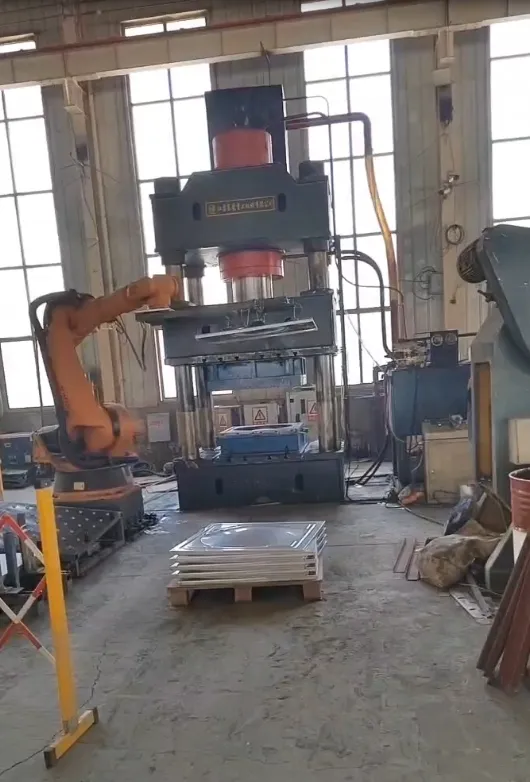loading...
- No. 9, Xingyuan South Street, Dongwaihuan Road, Zaoqiang County, Hengshui, Hebei, China
- admin@zjcomposites.com
- +86 15097380338
- Welcome to visit our website!
Exploring the Applications and Benefits of Structural Fiber Reinforced Polymer Materials
Exploring the Role of Structural FRP in Modern Engineering
In recent years, the construction and engineering industries have witnessed a significant shift towards the use of advanced materials. One such innovation that has garnered considerable attention is Fiber Reinforced Polymer (FRP). Structural FRP is a composite material that combines fibers, such as glass, carbon, or aramid, with a polymer matrix, creating a strong and lightweight alternative to traditional building materials like steel and concrete. This article explores the benefits, applications, and future of structural FRP in modern engineering.
Benefits of Structural FRP
One of the most compelling advantages of structural FRP is its high strength-to-weight ratio. FRP materials are typically much lighter than steel, allowing for easier handling and reduced transportation costs. This attribute is particularly beneficial in applications where reducing the overall weight of structures can enhance their performance, such as in bridges and buildings subjected to seismic forces.
Additionally, structural FRP exhibits excellent corrosion resistance. Traditional materials like steel are susceptible to rust and degradation over time, particularly in harsh environments. In contrast, FRP remains unaffected by moisture and chemicals, making it an ideal choice for infrastructure exposed to marine conditions, chemical plants, or urban environments where de-icing salts are used.
Moreover, structural FRP provides design flexibility. The manufacturing processes used to create FRP allow for intricate shapes and forms that can be tailored to meet specific architectural demands. This design versatility enables architects and engineers to push creative boundaries, yielding aesthetically pleasing and functional structures.
Applications of Structural FRP
structural frp

The applications of structural FRP are vast and varied. In the realm of construction, FRP is commonly used in strengthening existing structures. For instance, it can be wrapped around columns or beams to increase their load-carrying capacity, thus prolonging the lifespan of aging infrastructures. Similarly, FRP is employed in the rehabilitation of bridges, enhancing their load-bearing capabilities while minimizing disruption to traffic.
In addition to strengthening structures, FRP has found its place in new construction projects. It is particularly popular in applications involving high-performance buildings, where energy efficiency and sustainability are prioritized. For example, FRP can be used in the construction of lightweight facades or roof systems that contribute to the overall energy efficiency of a building.
Transportation infrastructure also benefits from structural FRP. The lightweight nature of FRP makes it suitable for manufacturing components like railings, barriers, and bridge decks. Its durability ensures that these components require less maintenance over time, ultimately reducing costs for municipalities and transportation authorities.
The Future of Structural FRP
Looking ahead, the future of structural FRP appears promising. As demand for sustainable construction practices grows, engineers are increasingly turning to materials that minimize environmental impact. FRP's longevity and reduced maintenance requirements align well with sustainability goals, making it a material of choice for eco-friendly projects.
Moreover, advancements in technology are likely to further enhance the properties of structural FRP. Continuous research into new fiber types, polymer matrices, and manufacturing techniques could lead to even stronger and more versatile FRP products. Additionally, the development of smart materials incorporating sensors within FRP could revolutionize monitoring and maintenance practices, ensuring safety and performance.
In conclusion, structural FRP stands out as a transformative material in modern engineering. Its unique properties, combined with a wide range of applications, make it a vital component for the construction industry. As we move towards a more sustainable and innovative future, structural FRP will undoubtedly play a crucial role in shaping resilient and efficient infrastructures worldwide. The ongoing research and development in the field promise not only to enhance the performance of existing materials but also to foster the creation of new ones, ensuring that structural FRP remains at the forefront of engineering excellence.
-
GRP Structures: The Future of Lightweight, High-Performance EngineeringNewsJun.20,2025
-
FRP Water Tank: High-Performance Storage for Corrosive and Clean Water SystemsNewsJun.20,2025
-
FRP Square Tube: The New Industry Standard for Chemical and Structural ApplicationsNewsJun.20,2025
-
FRP Pultruded Profiles: The Ultimate Choice for Lightweight Structural StrengthNewsJun.20,2025
-
FRP Handrails: The Safer, Smarter, and Stronger Choice for Modern InfrastructureNewsJun.20,2025
-
FRP Grating: The Smart Solution for Durable, Lightweight Industrial FlooringNewsJun.20,2025
-
Why Choose a Galvanized Water Tank for Your Storage NeedsNewsMay.21,2025
